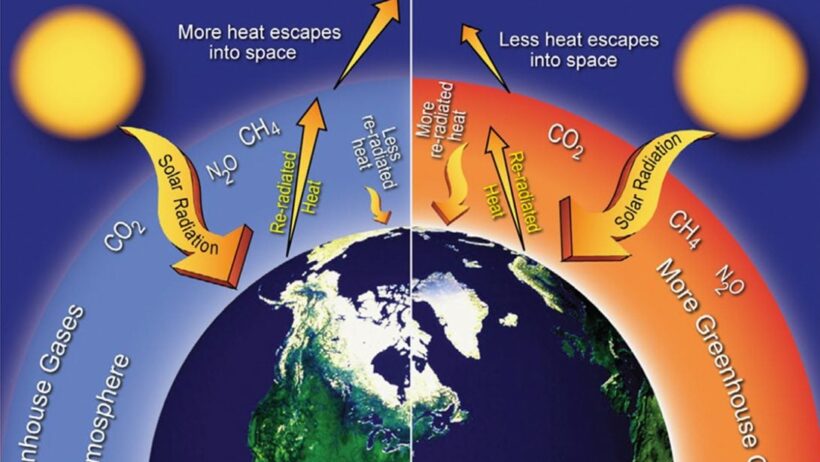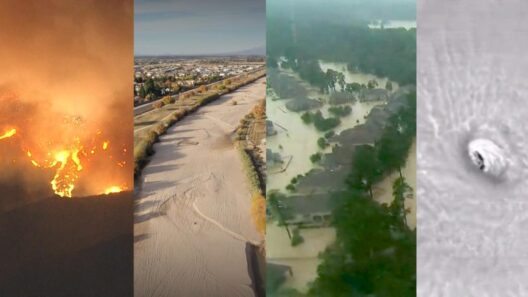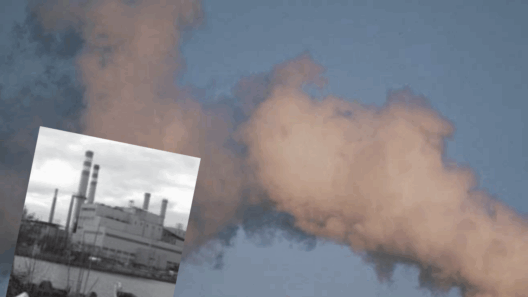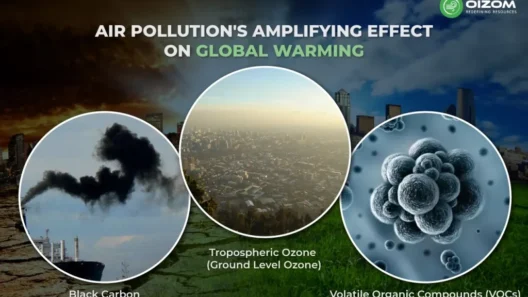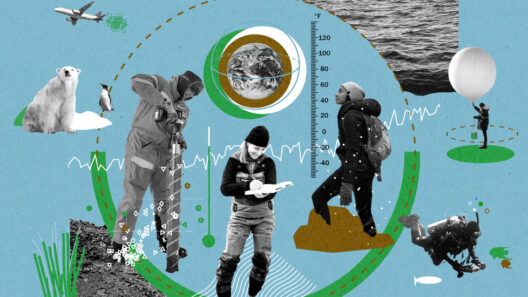The phenomenon of global warming has become an indelible concern in contemporary discourse, relegating previous environmental matters to the periphery. Central to this issue is the concept of greenhouse gases (GHGs), which have garnered widespread attention for their role in altering the delicate equilibrium of Earth’s climate system. To comprehend the gravity of this situation and to grasp how these gases function as heat traps, it is crucial to delve deeper into the mechanics of GHGs and their consequential impacts on our planet.
At the heart of understanding GHGs is the greenhouse effect, a natural occurrence that enables life on Earth to flourish. When solar radiation enters the Earth’s atmosphere, some of it gets absorbed by the surface, warming the planet. The Earth then re-emits this energy in the form of infrared radiation. However, not all of this outgoing heat escapes into the abyss of space. Greenhouse gases, including carbon dioxide (CO₂), methane (CH₄), and nitrous oxide (N₂O), absorb and re-radiate this heat, effectively trapping it within the atmosphere. This process is akin to a greenhouse, where glass panels facilitate an increase in temperature by allowing sunlight in while confining heat.
Historically, GHGs have been a critical component of Earth’s climatic regulation. Without them, our planet would be an inhospitable frozen wasteland rather than the verdant orb teeming with diverse life forms. However, human activities, particularly since the advent of the Industrial Revolution, have dramatically escalated the concentrations of these gases in the atmosphere, resulting in an enhanced greenhouse effect. This amplification leads to increasingly higher global temperatures, a phenomenon known as global warming.
In recent years, there has been a burgeoning recognition of the various sources of these emissions. Fossil fuel combustion, whether in vehicles or power plants, stands as the preeminent contributor to CO₂ emissions. The burning of coal, oil, and natural gas releases vast quantities of this greenhouse gas. Furthermore, deforestation exacerbates the situation, as trees that once absorbed CO₂ are diminished, reducing nature’s filtration system. Agricultural practices also play a significant role; ruminant livestock such as cattle produce substantial amounts of methane during digestion, a gas with a heat-trapping capacity many times greater than CO₂ over a short timescale.
The ramifications of increased GHG concentrations extend beyond mere temperature rises. They infiltrate our weather patterns, altering precipitation rates and intensifying the frequency and severity of extreme weather events. Droughts, floods, heatwaves, and hurricanes exemplify the chaotic vicissitudes to which our climate is subjected as a result of this disturbance. The interplay among GHGs, temperature, and atmospheric dynamics fortifies the urgency to comprehend and mitigate these effects.
Moreover, a lesser-known but equally pertinent aspect of the GHG phenomenon is the feedback mechanisms that can exacerbate the situation. For instance, as Earth’s temperature rises, polar ice melts, reducing the planet’s albedo—the reflective capacity of surfaces. Darker ocean waters absorb more heat, consequently elevating temperatures further. This feedback loop presents a daunting paradox where the very changes induced by climate change contribute to accelerated warming, leading to what could be termed a ‘vicious cycle’.
To culminate the deleterious impacts of GHG emissions, let us consider the implications for biodiversity. Many ecosystems are experiencing profound stress due to shifting climatic conditions. Species are struggling to adapt to altered habitats—some are migrating toward the poles or to higher altitudes in search of suitable climates. However, many organisms do not possess the ability or speed to adapt to these rapid changes, leading to extinctions and reductions in biodiversity. Such losses entail not only ecological but also economic and social ramifications, as ecosystems provide myriad services essential for human survival—from clean water and air to pollination of crops.
Considering the profound understanding necessary to address the climate crisis, it becomes apparent that education and awareness are crucial. Individuals and communities can take action through sustainable practices, advocating for policies that reduce GHG emissions, and supporting innovative technologies that promote clean energy sources. Transitioning toward renewable energy solutions—such as solar, wind, and hydroelectric power—is paramount to diminish our reliance on fossil fuels. The transition is not merely an environmental necessity; it also paves the way for economic opportunities and job creation in emerging industries.
In light of these diverse aspects of greenhouse gases and their effects on global warming, it is abundantly clear that we must take decisive action. Shifting our perspective to one that embraces sustainability, respect for natural systems, and proactive measures will ensure the resilience of our shared planet. By reducing GHG emissions, we have the power to not only mitigate climate change but to foster a healthier environment for generations to come.
Therefore, in grasping the science of heat traps, we unveil the critical connections between human activities and their consequences on global systems. Awareness ignites the spark of curiosity and responsibility, nudging us to embrace change. Together, we can champion and cultivate a future wherein Earth’s climate can stabilize, promoting balance and preserving the rich tapestry of life that inhabits our planet.



